At #NeoCon09: Holly Hunt, Kyle Bunting, and the Wonders of “Hair on Hide”
I can’t quite put my finger on it, but something about the name “Kyle Bunting” suggests textiles, perhaps it’s the loose resemblance between the surname and the often-arcane glossary of these “soft goods.” Though I’m tempted to review, I’ll simply refer you to my previous posting on Kravet Textiles and consult good old reliable Wikipedia for the goods on “bunting”: “originally a lightweight worsted wool fabric used for making flags of the Royal Navy, today, ‘bunting’ is a term for any festive decorations made of fabric, plastic, paper, or even cardboard.”
Anodyne. Designed by Kyle Bunting for Holly Hunt.
I guess the inspired creations of Mr. Bunting qualify, though his focus is on innovative applications of “hair on hide”: “Recognized foremost for their collection of luxury hide carpets and wall coverings, the company also supplies hides for architectural and upholstery applications, completing thousands of projects for design professionals and private clients throughout the world.” Bunting et. al certainly does what no one else can with a material that’s under-utilized in high-end design. This is because his patented design process lets him “put cowhide together in a way no one could… allowing him to create much smaller and more detailed patterns.” The innovation also opens up the collaborative environment between Bunting and designers like Ryan Brewer, Christian Arkay-Leliever, and David Rockwell, whose Four Seasons pattern of complimentary linear shapes and contrasting colors evokes the musicality of Vivaldi’s classic composition. It also explains the collaboration between Bunting and Holly Hunt, an industry leader in the design, manufacture, and showcasing of luxury home furnishings.
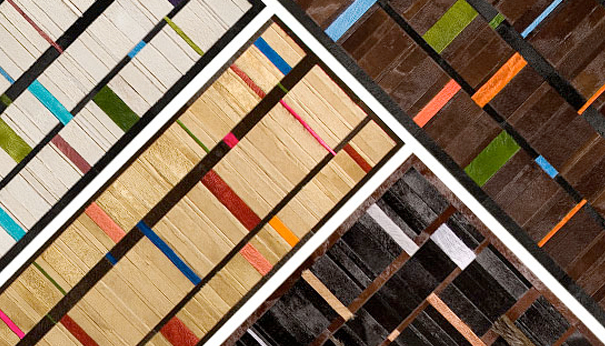
Four Seasons. Designed by Kyle Bunting, Ryan Brewer, Christian Arkay-Leliever, and David Rockwell for Holly Hunt.
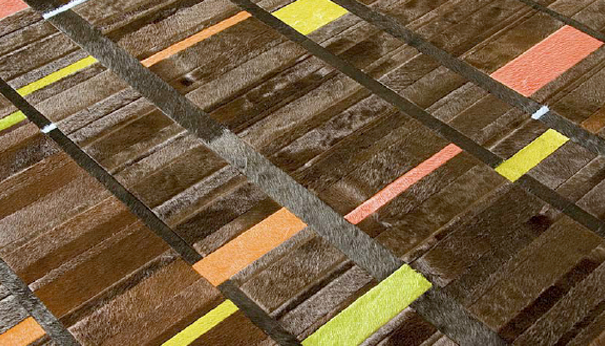
Four Seasons. Designed by Kyle Bunting, Ryan Brewer, Christian Arkay-Leliever, and David Rockwell for Holly Hunt.
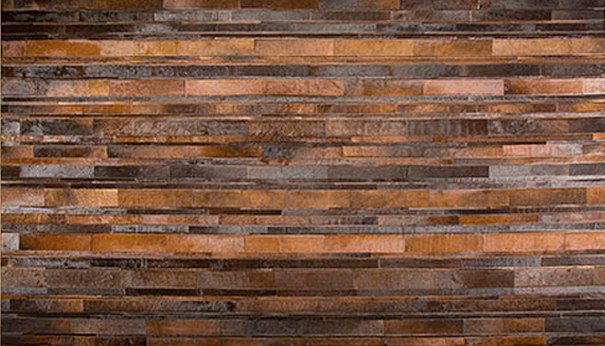
Jetstream. Designed by Neri and Hu with Kyle Bunting for Holly Hunt.
Among Holly Hunt’s 20-some showrooms country-wide is a permanent space at Chicago’s Merchandise Mart, home of #NeoCon09, so the burgeoning relationship between Hunt and Bunting promises increased visibility for the cowhide collection. Thus, inspired designs like Neri and Hu’s Jetstream—a beautifully tactile piece with an uncanny resemblance to Eric Johnston’s Wall Sculptures; or Bunting’s very own Anodyne—an intricately-woven wall sculpture in its own right, whose running bond configuration is reminiscent of the handy work of an expert mason—are sure to see the light of day. These and other Hunt/Bunting designs will grace the space of the Hunt showroom come June 15, so don’t forget to stop by and see first-hand the evolution of the humble hide rug.
As a side-note, I must admit that a product whose raw material is harvested from animals initially made me blanch. But on further reflection I realized that “hair on hide” is no different from that all-pervasive leather, utilized without a thought in everything from shoes to the skins of our notebooks and valises. This made me realize that designers who work with the by-products of the meat industry have an ethical obligation of sorts: just as meat-eaters should reconcile their choices with the truth of factory farms, so should designers understand exactly where their raw material originates—sort of the “green” analogue for work in leather and suede. So how about it readers? Should companies begin to embrace an ethos of “leather from free range cows,” or “suede from cruelty-free ranches and farms?” As a confirmed omnivore willing to ante up for organic/local beef and chicken, I’ll be the first to answer “yes.”

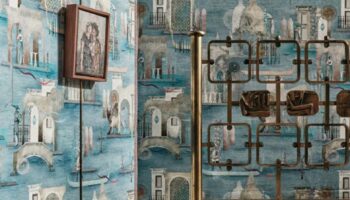
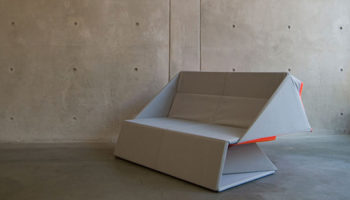

Leave a Reply